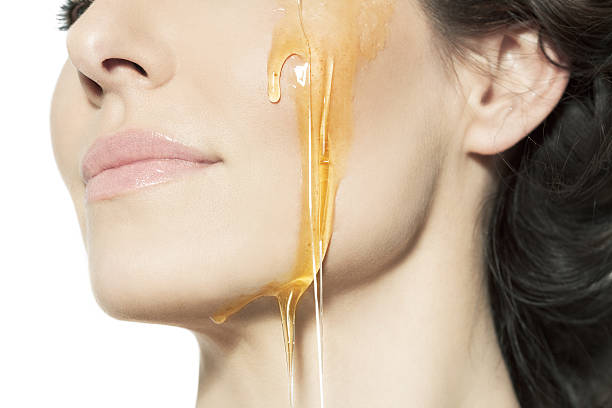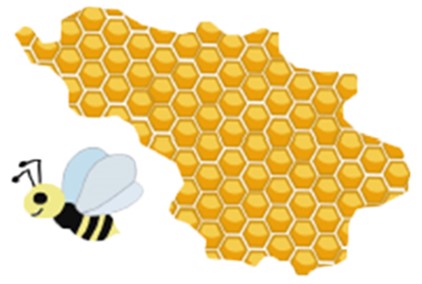
Honey is awesome. I’ve found its best consumed when combined with nougat and wrapped in dark chocolate but I digress.
Honey also has some pretty amazing properties, it’s broadly antimicrobial and seemingly able to promote healing. My Nan would always give me a spoonful of honey alongside other meds when I had colds and flus but as you can see below it can have pretty amazing results on far more serious injuries.
Honey’s ‘healing powers’ can be summarised into 5 main ingredients or activities of the components of honey;
-
- Hydrogen peroxide – Honey contains an enzyme called glucose oxidase which breaks down glucose sugars and generates hydrogen peroxide, a kind of bleach, when there is free water available. In case you missed the antimicrobial component it was friggin BLEACH IN YOUR HONEY. I can feel you wondering why bees would bleach their own food supply and it turns out that is very simple. Any available water can cause the honey to spoil so the presence of glucose oxidase in the honey is an inbuilt anti-spoiling mechanism, pretty smart huh?
-
- Sugar – The hydrogen peroxide control mechanism is a back up as very little free water exists in honey. The lack of free water is due to the vast amount of sugar dissolved into honey which gives it a low water activity. This essentially means that honey is more likely to take up water from its surroundings than have water removed from it and if you are a micro-organism it makes it very difficult to survive.
-
- Methylglyoxal or MGO – This compound is an incredibly interesting and powerful antibacterial compound but, it is only found in certain natural honeys (Manuka honey from New Zealand) although it can be made in artificial greenhouses as well. This is the stuff that is making honey a potentially very useful topical salve (with the possibility of other forms of treatment being considered) in medical honey treatments such as MediHoney.
-
- Bee Defensin 1 – Bee Defensin is an antimicrobial peptide (AMP) that for a long time was thought to be exclusively found in the Royal Jelly (The food worker bees make for potential Queen larve). But fairly recent discoveries have found it in the honey, but more on AMPs in a second.
-
- Acidity – Finally, honey is fairly acidic and remains so even when diluted holding a pH of approximately 3.5. Nothing that likes eating you particularly likes living in acid so this property is very important.
No single property is more important than the others and the multifactorial nature of honey’s activities is probably the key to its amazing antimicrobial nature. Having said this, Bee Defensin 1 and other identified AMPs in honey such as Apidaecin may have much more involved roles that are only recently being uncovered.
Typically defensins interact with the bacterial membrane and assemble into shapes that facilitate a ‘hole-punching’ mechanism. The hole-punchers then do just that to the bacterial cell‘s membrane causing its insides to leak to its outsides. This is rarely good which may account for the observation that defensins can be found all over the place on the tree of life. They form part of our own innate immune system but you can find them in invertebrates and even in some plants.
Apidaecins, however, work differently. Instead they have been observed moving into the microbial cytoplasm where they bind the protein DnaK. DnaK is involved in helping bacterial cells handle stress (not the ‘hard day at the office’ kind, the ‘my environment is trying to tear me apart’ kind). By binding to and inactivating DnaK the bacterial cell cannot respond to a hostile and stressful environment and as a result they die. This ability to induce death via an intracellular mechanism is very attractive to the fields of drug development and structural biology and better yet, a more complete understanding of this mechanism may lead to the development of new antibiotics.
Interestingly, apidaecins seem to also have the ability to alter the host immune system by modifying chemotaxis (movement of cells in the immune system), apoptosis (induced cell death), cytokine/chemokine production (the production of signalling chemicals which direct the immune response), antigen presentation and the Th1/Th2 balance (whether you fight the nasty with B cells or T cells).
In most cases the ability of apidaecins (and their homologues) to modulate the immune system has been done in the the organism the AMP was originally recovered from but some recent work sugests the potential for insect apidaecin to have a crossover effect on a mammalian system. While apidaecin is insect derived it appears to be sufficiently similar in shape to human AMPs that it can interact with and modify the activity of our immune system. When macrophages in particular were incubated with apidaecin they started pumping out chemokines and cytokines that promote increased antimicrobial activity in these cells. Additionally when these cells were stimulated with apidaecins and lipopolysaccharide (a potent immune system activator found on the surface of many bacterial cells) apidaecin seemed to counter some of the pro-inflammatory effects normally observed with lipopolysaccharide stimulation suggesting it can both promote and regulate the response to microbes.
While only preliminary, it seems honey and its various components might have more secrets to unveil which will further develop our understanding of the anti-microbial nature of this environmental product and at the same time its pro-immune responses elicited when we use it.
Tavano, R., Segat, D., Gobbo, M., & Papini, E. (2011). The Honeybee Antimicrobial Peptide Apidaecin Differentially Immunomodulates Human Macrophages, Monocytes and Dendritic Cells Journal of Innate Immunity, 3 (6), 614-622 DOI: 10.1159/000327839
Kwakman, P., te Velde, A., de Boer, L., Speijer, D., Vandenbroucke-Grauls, C., & Zaat, S. (2010). How honey kills bacteria The FASEB Journal, 24 (7), 2576-2582 DOI: 10.1096/fj.09-150789
The views expressed are those of the author(s) and are not necessarily those of Scientific American.
ABOUT THE AUTHOR(S)

Dr James Byrne has a PhD in Microbiology and works as a science communicator at the Royal Institution of Australia (RiAus), Australia’s unique national science hub, which showcases the importance of science in everyday life. Follow James Byrne on Twitter
